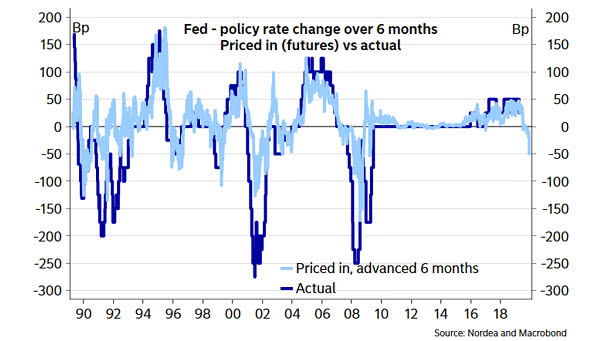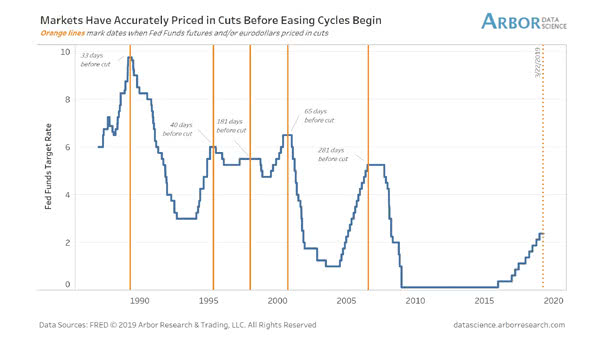Fed Monetary Policy Rate Change over 6 Months Prices in (Futures) vs. Actual
Fed Monetary Policy Rate Change over 6 Months Prices in (Futures) vs. Actual Actually, the Fed decides when to raise rates, but the market decides when to cut rates. This chart shows that rate expectations are highly predictive six months in advance. You may also like “Markets Have Accurately Priced in Cuts before Easing Cycles…


